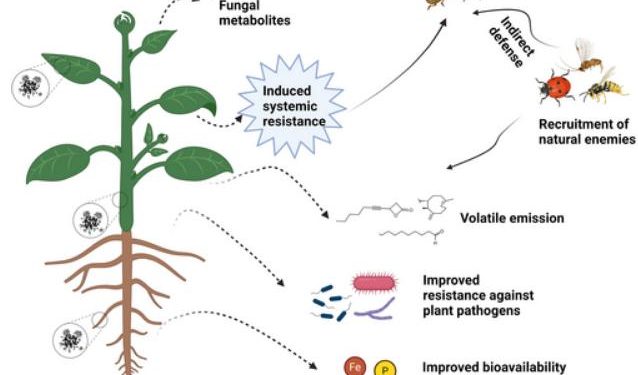The rapidly growing global population necessitates increased food production, which can be achieved either through expanding cultivated land or enhancing productivity per unit area. Given the limited potential for increasing the acreage of cropped area, improving the efficiency and effectiveness of crop production is key to addressing global food needs. The diverse biotic and abiotic challenges common in crop protection pose a significant challenge by limiting the yield and quality of crops. Insect pests cause global crop losses ranging from 18% to 26%, which can reach $470 billion in economic losses each year. Insecticides are often a primary means of suppressing pests and have played an important role in enhancing the global yield and quality of crops. However, overreliance on insecticides has led to pesticide resistance, secondary pest resurgence, and negative effects on non-target organisms, including mammals.
These challenges, along with growing environmental and human safety concerns, have driven the need for integrated management approaches. Among the non-chemical control options, biological control in general and fungal entomopathogens in particular address the need for sustainable solutions to pest suppression. These fungi penetrate the insect cuticle, which increases epizootic occurrences and subsequently elevates the mortality rates of pests. Over 700 fungal species belonging to approximately 90 genera have been reported as pathogenic to insects. The most widely used entomopathogenic strains belong to the genera Beauveria spp., Metarhizium spp., Hirsutella spp., Lecanicillium spp., Verticillium spp., and Paecilomyces spp. Available in a wide range of commercial formulations, including wettable powders, liquid solutions, and suspensible granules, these fungal strains can be used as biocontrol agents to suppress key pests in diverse systems.
It is noteworthy that numerous studies provide evidence that these entomopathogens can successfully colonize plants and establish within plant tissues as endophytes without causing pathogenicity. In contrast to topical introductions of fungi to suppress pests, using entomopathogenic endophytes offers the advantage of directly targeting pests within the plant, thus reducing application costs and the need to re-introduce the fungi.
In recent years, there has been growing interest in the role of endophytic fungi in the production of bioactive metabolites and their potential as a biocontrol agent against various crop pests. Endophytic fungi can produce a diverse range of bioactive compounds, including phenols, flavanols, terpenoids, quinones, benzopyranones, tannins, and saponins. These compounds provide protection against a wide range of microbes due to their antioxidant, antifungal, and antimicrobial properties. With their diverse array of secondary metabolites and intimate interactions with host plants, endophytic fungi have emerged as promising candidates for biological control of insect pests.
Interestingly, many entomopathogenic fungi also exhibit endophytic lifestyles, colonizing plant tissues without causing harm and providing the benefits of biocontrol agents. For example, species like Beauveria spp. and Metarhizium spp. can function both as endophytes, enhancing plant growth and resistance, and as entomopathogens, controlling pest populations. This dual functionality highlights the potential of endophytic entomopathogenic fungi as an innovative and eco-friendly alternative to chemical pesticides in integrated pest management.
Reference: Panwar, N. and Szczepaniec, A. (2024), Endophytic entomopathogenic fungi as biological control agents of insect pests. Pest Manag Sci. https://doi.org/10.1002/ps.8322
Error




